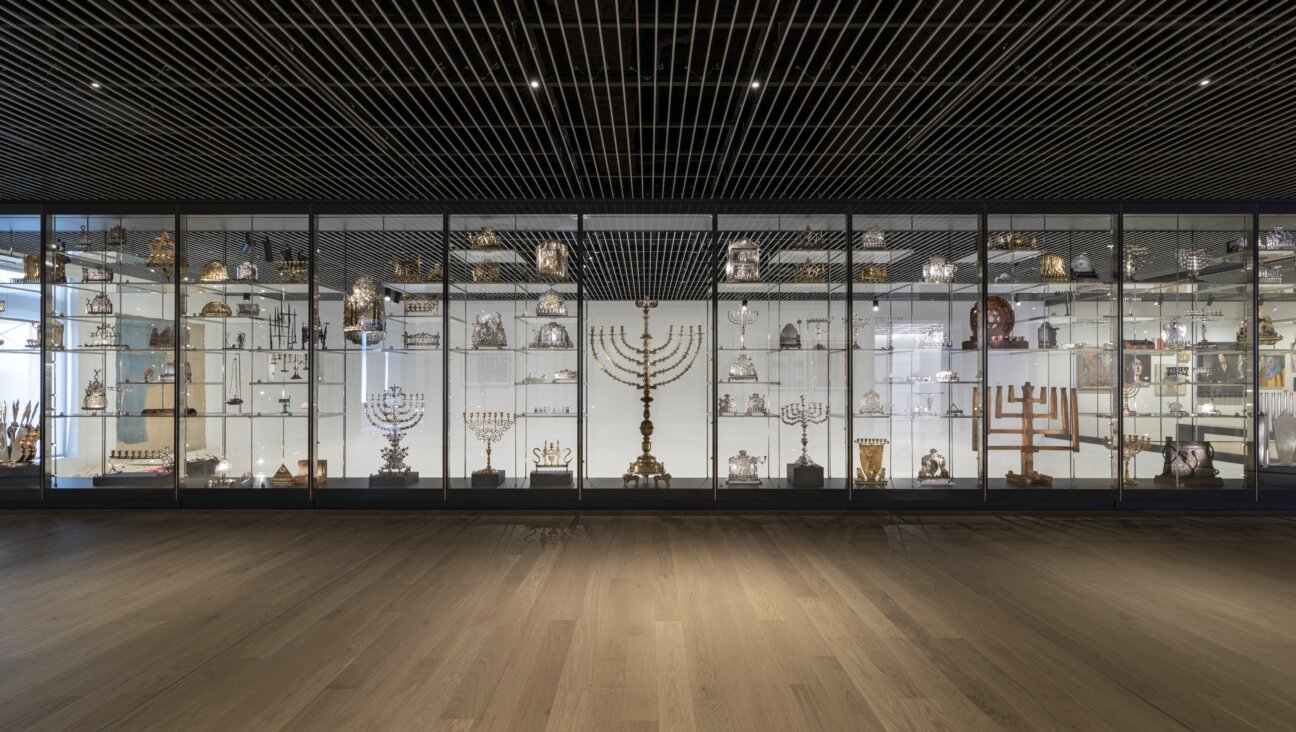1/3 Of The Paintings In Genoan Modigliani Exhibit Were Forgeries, Art Expert Says

Image by Franco Origlia/Getty Images
Amedeo Modigliani, the Sephardic Italian painter and sculptor whose work is widely thought to have helped establish Modernism, is a favorite target of art forgers.
Such a favorite, in fact, that a shocking third of the artworks shown in a recent exhibit focused on Modigliani in Genoa, Italy may have been fakes.
As The New York Times reports, Isabella Quattrocchi, an art expert tasked by Italian prosecutors with determining the contested artworks’ provenance, has concluded that 21 of the works shown in the 2017 Palazzo Ducale exhibit are forgeries. Those works include 15 currently attributed to Modigliani — seven drawings and eight paintings — as well as six paintings thought to be the work of Moise Kisling, an artist who occasionally worked alongside Modigliani.
While prosecutors have yet to charge anyone with a crime in regard to the display of the artworks, three individuals are being investigated in connection to accusations that the exhibit included forgeries.
As Daniel Witkin wrote for the Forward in August, when those accusations were first made public, one of the reasons for Modigliani’s popularity with art forgers is that he lacks a definitive catalogue of work, or catalogue raisonné. While most artists have one such catalogue, Modigliani, Wiktin wrote, has six, with a seventh forthcoming. Marc Restellini, the author of the upcoming volume, has faced death threats over his endeavor, which will add nearly 80 works to the Modigliani originals listed by Ambrogio Cerigo, author of the most recent catalogue to date. “Restillini’s catalogue would be a boon for owners of the newly-authenticated pieces, while owners of Ceroni-certified works fear that an increase in verified Modiglianis might devalue their own properties,” Witkin wrote.
The challenge of creating a definitive list of Modigliani’s works offers an opportunity for art forgers, but, according to the Italian news agency ANSA’s report on Quattrocchi’s findings, those forger’s efforts to fake the artist’s work are often sloppy. ANSA quoted Quattrocchi as declaring that the artworks “have nothing to do, either in context or in historical period, with Modigliani,” that there are clear irregularities in both the artworks’ style and the quality of the paint used, and that the pictures’ frames “originated in countries of eastern Europe and the United States,” where Modigliani never worked.
Rudy Chiappini, who curated the exhibit at the Palazzo Ducale and is one of the individuals under investigation, told The Times that Quattrocchi’s findings did not reflect on the integrity of the exhibit itself.
“The exhibit did not have any new attributions, and none of the works in the show had been contested before; they were all known and accepted,” he said.
Giuseppina Antognini, who owns one of the contested paintings, echoed Chiappini’s defense, telling The Times that the painting had a long and impressive exhibition history, which she had believed supported the idea that its claims to authenticity. She expressed the wish to have the painting’s provenance independently investigated.
If criminal charges are filed, The Times reported, defendants in the case will be able to petition the court for such an investigation.

















